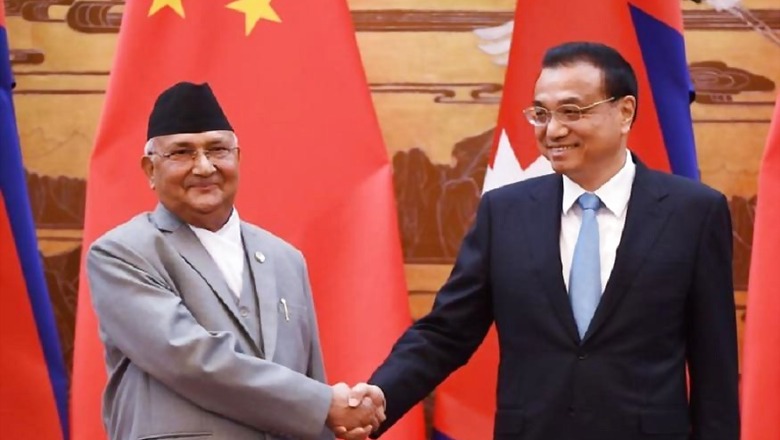
views
Kathmandu: China will allow Nepal the use of four of its ports, the Nepalese government said on Friday, as the landlocked Himalayan nation seeks to end India’s monopoly over its trading routes by increasing connections with Beijing.
Wedged between China and India, Nepal depends heavily on India for the supply of essential goods including fuel and the use of its ports for trade with other countries.
But Kathmandu has sought access to Chinese ports to reduce dependence on India since a prolonged blockade of its border crossings with India in 2015 and 2016 left the country short of fuel and medicine for several months.
Officials from Nepal and China finalised a protocol during a meeting in Kathmandu on Friday giving Nepal access to the Chinese ports at Tianjin, Shenzhen, Lianyungang and Zhanjiang, a statement from Nepal’s Commerce Ministry said.
It said China had also agreed to allow Nepal use its dry (land) ports at Lanzhou, Lhasa and Xigatse as well as roads to these facilities. The arrangements will come into effect when the protocol is signed, an official said without giving a date.
“This is one of the milestones because we are getting access to four Chinese ports in addition to two ports in India,” Rabi Shankar Sainju, a commerce ministry official, told Reuters.
He said Nepali cargo from Japan, South Korea and other north Asian countries could be routed through China which would cut shipping time and costs.
Overland trade is now routed mainly through the east Indian port of Kolkata which takes up to three months, officials said. New Delhi has also opened the southern port at Vishakhapatnam for Nepali trade.
Traders say the plan to connect the country with China could face issues due to a lack of proper roads and customs infrastructure on the Nepalese side of the border. The nearest Chinese port is also located more than 2,600 km (1,625 miles) from its border.
“Nepal must develop proper infrastructure for smooth access to Chinese ports. Without this simply opening of ports will not be useful,” said Anup Malla, an exporter of woollen carpets.
China is making fast inroads into Nepal with aid and investment, challenging India’s long-held position as the dominant outside power.
Beijing and Kathmandu are also in talks for building a railway link into Nepal, constructing an electric transmission line and are conducting a feasibility study for a free trade agreement.
China has failed to win India's support for its ambitious Belt and Road infrastructure project, President Xi Jinping's landmark scheme to connect China to the rest of Asia and beyond, a giant reworking of its old Silk Road.
India has not signed up to the initiative as parts of one key project, the $57 billion China-Pakistan Economic Corridor, runs through Pakistan-occupied Kashmir.


















Comments
0 comment